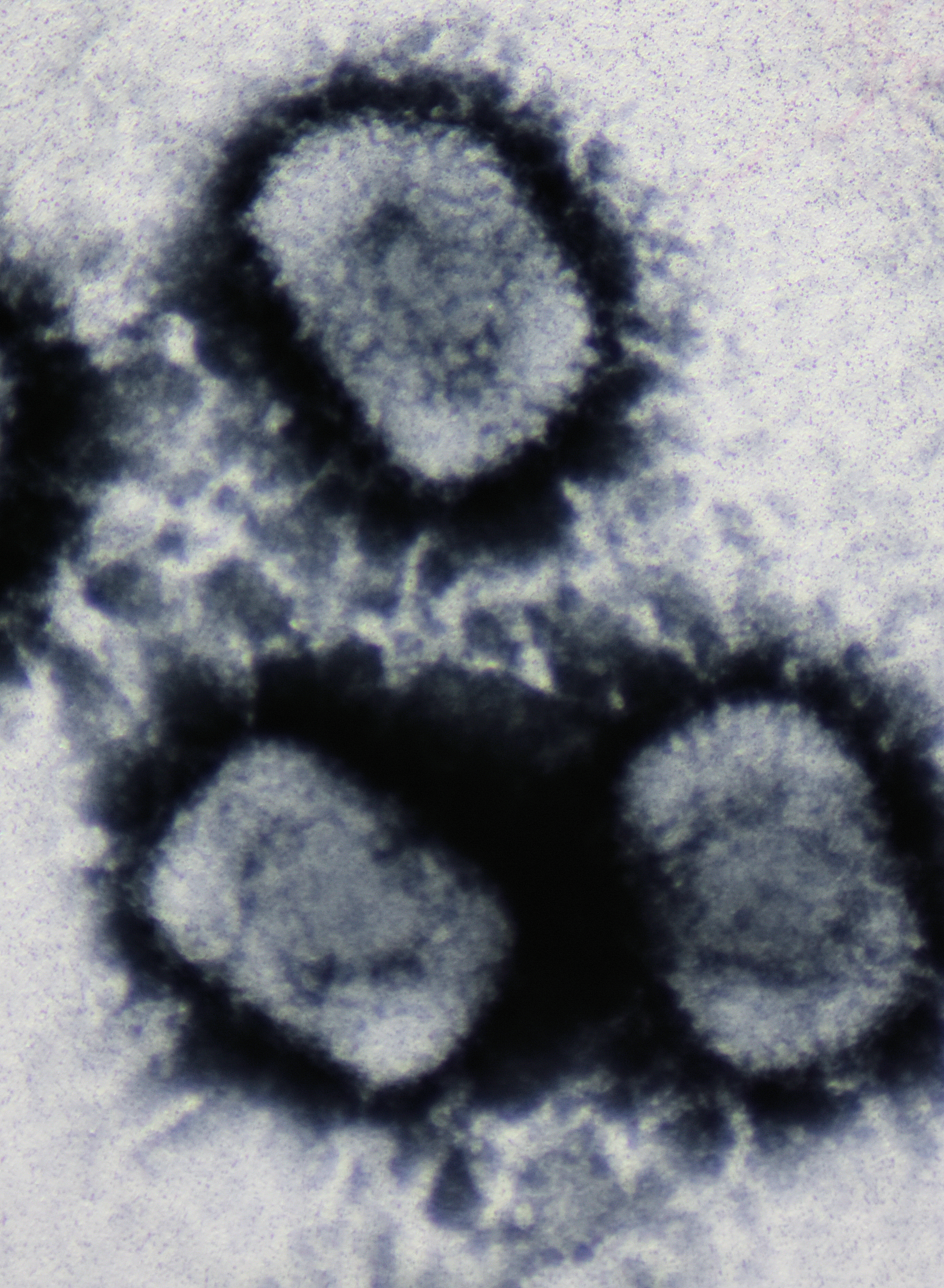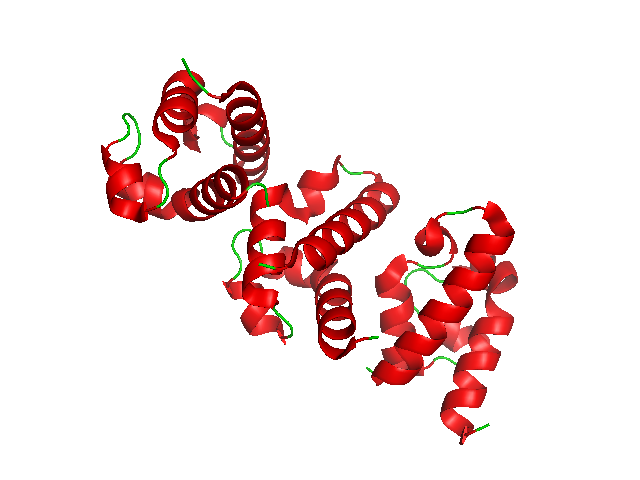|
Abalone Shriveling Syndrome-associated Virus
Abalone shriveling syndrome-associated virus was described in 2010 from an abalone which had died from abalone shriveling syndrome.Zhuang J, Cai G, Lin Q, Wu Z, Xie L (2012) A bacteriophage-related chimeric marine virus infecting abalone. PLoS One 5(11):e13850. __TOC__ Taxonomy While the ICTV does not include the ''Abalone shriveling syndrome-associated virus'' or the ''Abalone muscle atrophy virus'', as of August 13, the NCBI puts it under the ''Caudoviricetes'' class as an unclassified virus. Genome The genome is double stranded circular DNA with 34,952 base pairs and encodes 28 putative open reading frames. The G+C content of the genome is 39.5%. The functions of several of these proteins is known: these include the terminase, endonuclease, exonuclease, resolvase, helicase, primase and single-stranded binding protein. Seven other proteins appear to be structural in nature (head/tail proteins). Another protein encoded by the genome is thymidylate kinase. The remaining prot ... [...More Info...] [...Related Items...] OR: [Wikipedia] [Google] [Baidu] |
Abalone
Abalone ( or ; via Spanish , from Rumsen language, Rumsen ''aulón'') is a common name for any small to very large marine life, marine gastropod mollusc in the family (biology), family Haliotidae, which once contained six genera but now contains only one genus, ''Haliotis''. Other common names are ear shells, sea ears, and, now rarely, muttonfish or muttonshells in parts of Australia, ormer in the United Kingdom, perlemoen in South Africa, and pāua in New Zealand. The number of abalone species recognized worldwide ranges between 30 and 130 with over 230 species-level taxa described. The most comprehensive treatment of the family considers 56 species valid, with 18 additional subspecies. The gastropod shell, shells of abalone have a low, open spiral structure, and are characterized by several open respiratory pores in a row near the shell's outer edge. The thick inner layer of the shell is composed of nacre, which in many species is highly iridescence, iridescent, giving rise ... [...More Info...] [...Related Items...] OR: [Wikipedia] [Google] [Baidu] |
Double-stranded DNA Viruses
A DNA virus is a virus that has a genome made of deoxyribonucleic acid (DNA) that is replicated by a DNA polymerase. They can be divided between those that have two strands of DNA in their genome, called double-stranded DNA (dsDNA) viruses, and those that have one strand of DNA in their genome, called single-stranded DNA (ssDNA) viruses. dsDNA viruses primarily belong to two Realm (virology), realms: ''Duplodnaviria'' and ''Varidnaviria'', and ssDNA viruses are almost exclusively assigned to the realm ''Monodnaviria'', which also includes some dsDNA viruses. Additionally, many DNA viruses are unassigned to higher taxa. Reverse transcribing viruses, which have a DNA genome that is replicated through an RNA intermediate by a reverse transcriptase, are classified into the kingdom ''Pararnavirae'' in the realm ''Riboviria''. DNA viruses are ubiquitous worldwide, especially in marine environments where they form an important part of marine ecosystems, and infect both prokaryotes and eu ... [...More Info...] [...Related Items...] OR: [Wikipedia] [Google] [Baidu] |
Sequence Homology
Sequence homology is the homology (biology), biological homology between DNA sequence, DNA, RNA sequence, RNA, or Protein primary structure, protein sequences, defined in terms of shared ancestry in the evolutionary history of life. Two segments of DNA can have shared ancestry because of three phenomena: either a speciation event (orthologs), or a Gene duplication, duplication event (paralogs), or else a Horizontal gene transfer, horizontal (or lateral) gene transfer event (xenologs). Homology among DNA, RNA, or proteins is typically inferred from their nucleotide or amino acid sequence similarity. Significant similarity is strong evidence that two sequences are related by evolutionary changes from a common ancestral sequence. Sequence alignment, Alignments of multiple sequences are used to indicate which regions of each sequence are homologous. Identity, similarity, and conservation The term "percent homology" is often used to mean "sequence similarity”, that is the percen ... [...More Info...] [...Related Items...] OR: [Wikipedia] [Google] [Baidu] |
Thymidylate Kinase
Thymidylate kinase (; dTMP kinase) catalyzes the phosphorylation of thymidine 5'-monophosphate (dTMP) to form thymidine 5'-diphosphate (dTDP) in the presence of ATP and magnesium: : ATP + thymidine 5'-phosphate \rightleftharpoons ADP + thymidine 5'-diphosphate Thymidylate kinase is a ubiquitous enzyme of about 25 Kd and is important in the dTTP synthesis pathway for DNA synthesis. The function of dTMP kinase in eukaryotes comes from the study of a cell cycle mutant, cdc8, in ''Saccharomyces cerevisiae''. Structural and functional analyses suggest that the cDNA codes for authentic human dTMP kinase. The mRNA levels and enzyme activities corresponded to cell cycle progression and cell growth stages. Thymidylate kinase's subfamily is predicted thymidylate kinase, TKRP1. Human protein DTYMK contains this domain. Structural studies As of late 2007, 40 structures have been solved for this class of enzymes, with PDB accession codes , , , , , , , , , , , , , , , , , , , , , , , ... [...More Info...] [...Related Items...] OR: [Wikipedia] [Google] [Baidu] |
Single-stranded Binding Protein
Single-stranded binding proteins (SSBs) are a class of proteins that have been identified in both viruses and organisms from bacteria to humans. Viral SSB Although the overall picture of ''human cytomegalovirus'' (HHV-5) DNA synthesis appears typical of the herpesviruses, some novel features are emerging. Structure In ICP8, the herpes simplex virus (HSV-1) single-strand DNA-binding protein (ssDNA-binding protein (SSB)), the head consists of the eight alpha helices. The front side of the neck region consists of a five-stranded beta-sheet and two alpha helices, whereas the back side is a three-stranded beta-sheet The shoulder part of the N-terminal domain contains an alpha-helical and beta-sheet region. The herpes simplex virus (HSV-1) SSB, ICP8, is a nuclear protein that, along other replication proteins is required for viral DNA replication during lytic infection. Mechanism Six herpes virus-group-common genes encode proteins that likely constitute the replication fork machin ... [...More Info...] [...Related Items...] OR: [Wikipedia] [Google] [Baidu] |
Primase
DNA primase is an enzyme involved in the replication of DNA and is a type of RNA polymerase. Primase catalyzes the synthesis of a short RNA (or DNA in some living organisms) segment called a primer complementary to a ssDNA (single-stranded DNA) template. After this elongation, the RNA piece is removed by a 5' to 3' exonuclease and refilled with DNA. Function In bacteria, primase binds to the DNA helicase forming a complex called the primosome. Primase is activated by the helicase where it then synthesizes a short RNA primer approximately 11 ±1 nucleotides long, to which new nucleotides can be added by DNA polymerase. Archaeal and eukaryote primases are heterodimeric proteins with one large regulatory and one minuscule catalytic subunit. The RNA segments are first synthesized by primase and then elongated by DNA polymerase. Then the DNA polymerase forms a protein complex with two primase subunits to form the alpha DNA Polymerase primase complex. Primase is one of ... [...More Info...] [...Related Items...] OR: [Wikipedia] [Google] [Baidu] |
Helicase
Helicases are a class of enzymes that are vital to all organisms. Their main function is to unpack an organism's genetic material. Helicases are motor proteins that move directionally along a nucleic double helix, separating the two hybridized nucleic acid strands (hence '' helic- + -ase''), via the energy gained from ATP hydrolysis. There are many helicases, representing the great variety of processes in which strand separation must be catalyzed. Approximately 1% of eukaryotic genes code for helicases. The human genome codes for 95 non-redundant helicases: 64 RNA helicases and 31 DNA helicases. Many cellular processes, such as DNA replication, transcription, translation, recombination, DNA repair and ribosome biogenesis involve the separation of nucleic acid strands that necessitates the use of helicases. Some specialized helicases are also involved in sensing viral nucleic acids during infection and fulfill an immunological function. Genetic mutations that affect helicase ... [...More Info...] [...Related Items...] OR: [Wikipedia] [Google] [Baidu] |
Exonuclease
Exonucleases are enzymes that work by cleaving nucleotides one at a time from the end (exo) of a polynucleotide chain. A hydrolyzing reaction that breaks phosphodiester bonds at either the 3′ or the 5′ end occurs. Its close relative is the endonuclease, which cleaves phosphodiester bonds in the middle (endo) of a polynucleotide chain. Eukaryotes and prokaryotes have three types of exonucleases involved in the normal turnover of mRNA: 5′ to 3′ exonuclease (Xrn1), which is a dependent decapping protein; 3′ to 5′ exonuclease, an independent protein; and poly(A)-specific 3′ to 5′ exonuclease. In both archaea and eukaryotes, one of the main routes of RNA degradation is performed by the multi-protein exosome complex, which consists largely of 3′ to 5′ exoribonucleases. Significance to polymerase RNA polymerase II is known to be in effect during transcriptional termination; it works with a 5' exonuclease (human gene Xrn2) to degrade the newly formed transcr ... [...More Info...] [...Related Items...] OR: [Wikipedia] [Google] [Baidu] |
Abalone Shriveling Syndrome
Abalone ( or ; via Spanish , from Rumsen ''aulón'') is a common name for any small to very large marine gastropod mollusc in the family Haliotidae, which once contained six genera but now contains only one genus, ''Haliotis''. Other common names are ear shells, sea ears, and, now rarely, muttonfish or muttonshells in parts of Australia, ormer in the United Kingdom, perlemoen in South Africa, and pāua in New Zealand. The number of abalone species recognized worldwide ranges between 30 and 130 with over 230 species-level taxa described. The most comprehensive treatment of the family considers 56 species valid, with 18 additional subspecies. The shells of abalone have a low, open spiral structure, and are characterized by several open respiratory pores in a row near the shell's outer edge. The thick inner layer of the shell is composed of nacre, which in many species is highly iridescent, giving rise to a range of strong, changeable colors which make the shells attractive to ... [...More Info...] [...Related Items...] OR: [Wikipedia] [Google] [Baidu] |
Endonuclease
In molecular biology, endonucleases are enzymes that cleave the phosphodiester bond within a polynucleotide chain (namely DNA or RNA). Some, such as deoxyribonuclease I, cut DNA relatively nonspecifically (with regard to sequence), while many, typically called '' restriction endonucleases'' or ''restriction enzymes'', cleave only at very specific nucleotide sequences. Endonucleases differ from exonucleases, which cleave the ends of recognition sequences instead of the middle (''endo'') portion. Some enzymes known as "exo-endonucleases", however, are not limited to either nuclease function, displaying qualities that are both endo- and exo-like. Evidence suggests that endonuclease activity experiences a lag compared to exonuclease activity. Restriction enzymes are endonucleases from eubacteria and archaea that recognize a specific DNA sequence. The nucleotide sequence recognized for cleavage by a restriction enzyme is called the ''restriction site''. Typically, a restriction ... [...More Info...] [...Related Items...] OR: [Wikipedia] [Google] [Baidu] |



